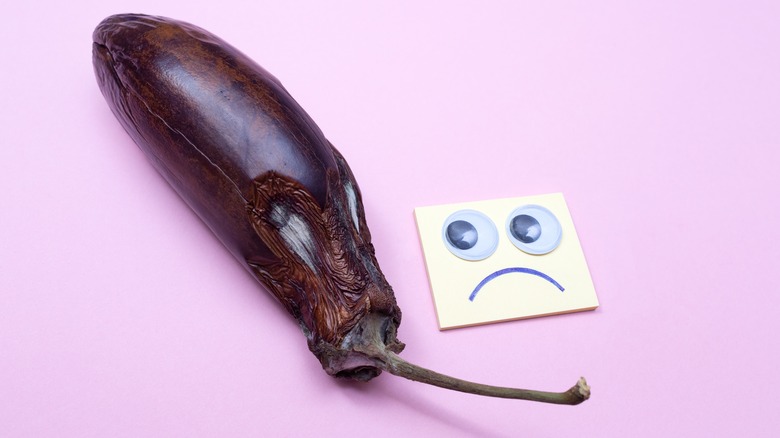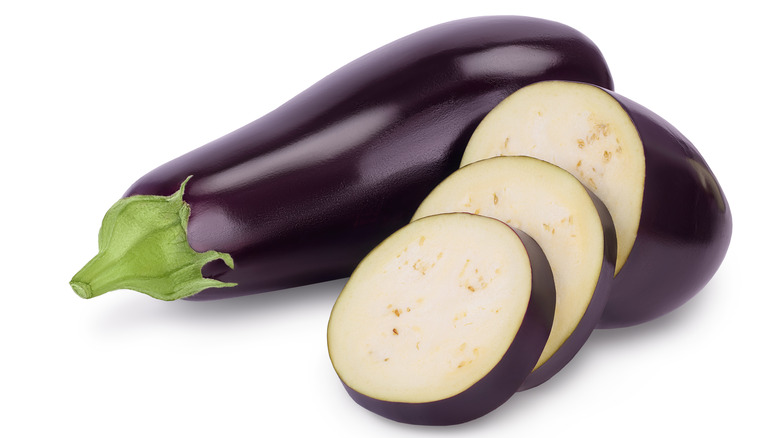Can You Eat Eggplant That's Brown?
Did you know that eggplants are actually fruits? While we typically think of the smooth, purple plants as savory veggies, botanically, they are a fruit much like tomatoes (despite the Supreme Court ruling that tomatoes are a vegetable). According to Business Insider, the purple part we eat is actually a really big berry.
And like their fruity relative the tomato, eggplants are more delicate than they look. All too often, when you go to slice into one that you bought a few days earlier, it hasn't retained its beauty. It can also develop scars that are usually yellow or brown and tight or raised with clear borders, and look much like the scars we get ourselves. So what's up with those brown spots and the mystery fridge slime eggplant falls prey to? What if it's brown when you cut into it? Or when you've let the slices sit out before adding them to a pan or baking dish? Can you just cut around the discolored parts, or do you need to give up on a lush, perfectly layered eggplant parmesan recipe and just upgrade some instant ramen instead?
Eggplant browning: Cut around or ditch?
If eggplant slices develop a brown tint while you're prepping your other ingredients, there's nothing to worry about. It's just like when apple slices brown, and no more harmful to eat. Both are due to oxidation and only affect the surface level exposed to air (via National Library of Medicine).
An eggplant with large scars is a clear sign the plant was damaged during growth, and solanine will have jumped in to defend around the injury (per ScienceDirect). Toxic to humans, solanine is a naturally occurring glycoalkaloid that defends nightshade plants during growth — and sometimes even after harvest, like how the trick to keeping your potatoes fresh longer is to keep them off the counter (via Oven Via and the University of Delaware). Definitely cut that part out.
If the marks are small and dry, you can safely cut around them, but avoid wet spots (per Eat or Toss). If spotting is accompanied by widespread discoloration, ditch the whole thing. Broad color change and squishy or wet spots can mean microbial damage. Also keep an eye out for signs of fungus, like large white areas or anything fuzzy (via Aggie Horticulture).
Generally speaking, eggplant is a vegetable that benefits from being judged by its appearance. An eggplant that's 100% safe for grilling or making baba ganoush will have smooth, shiny, richly colored skin all over. Just look out for blemishes and unusual textures, and remember that oxidized eggplant is fine to cook with.

